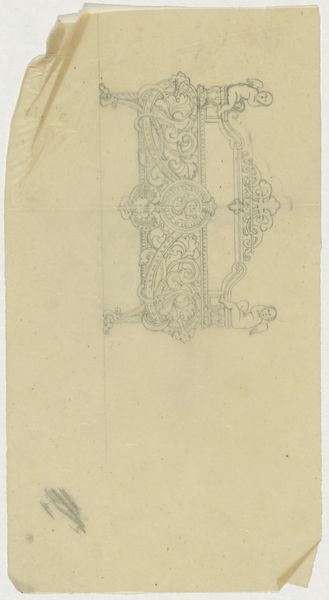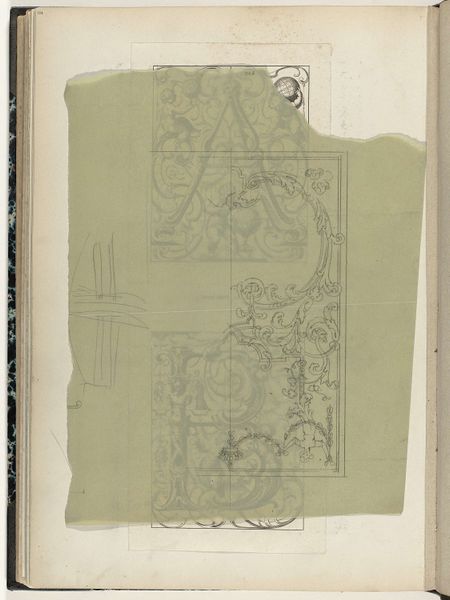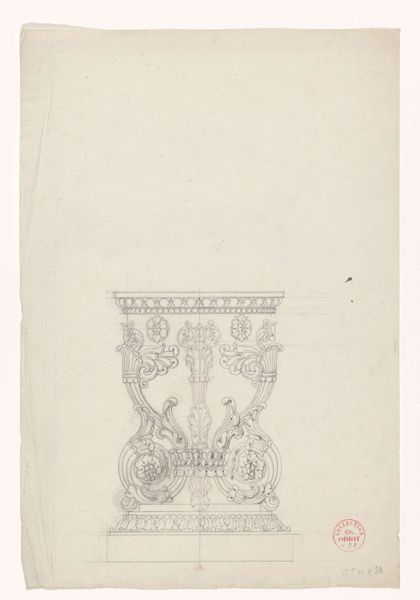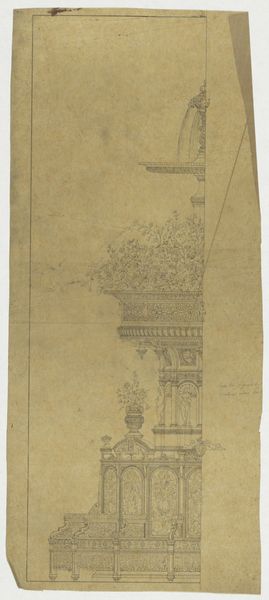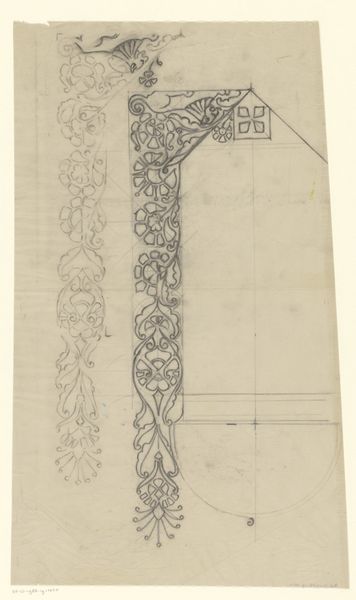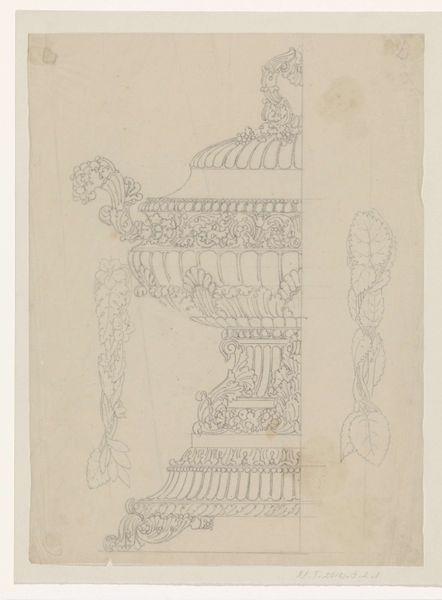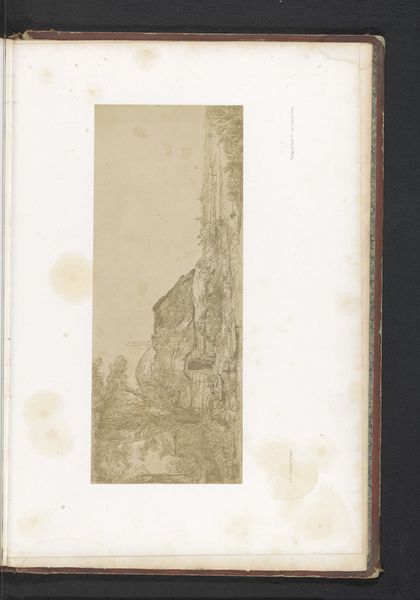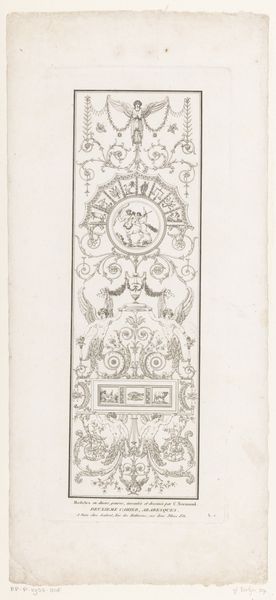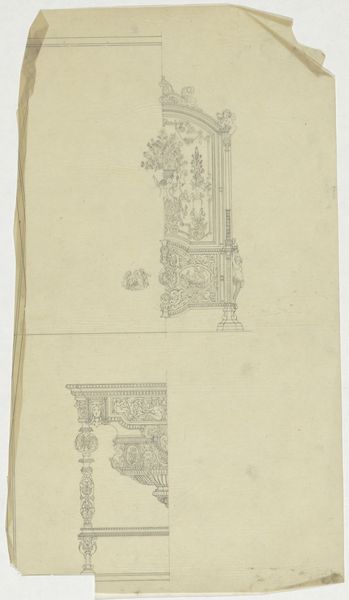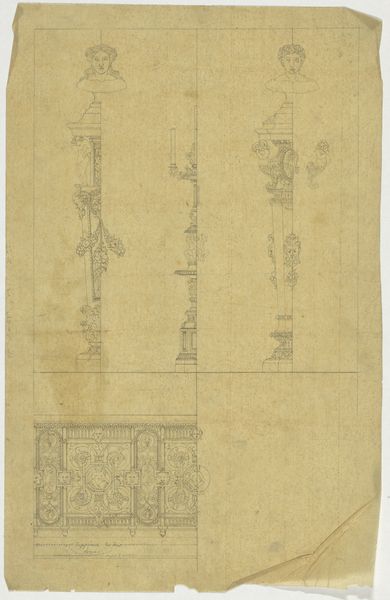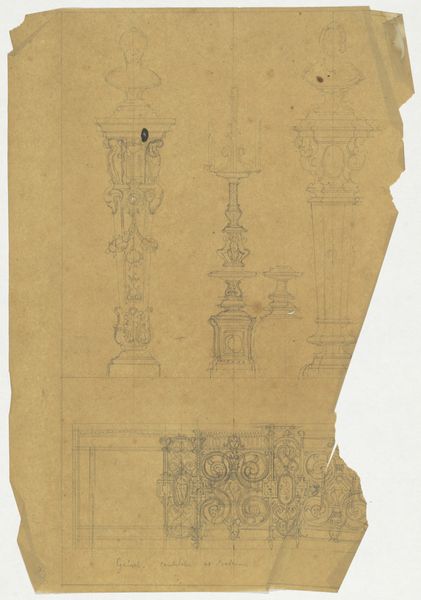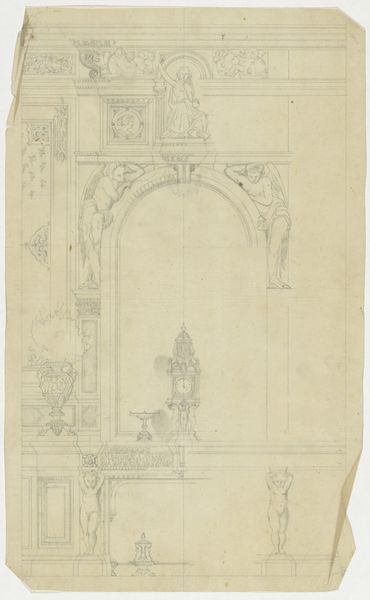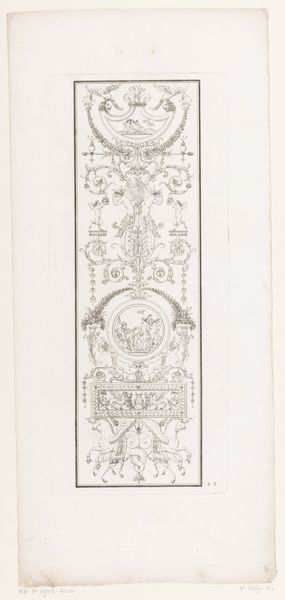
#
toned paper
#
light pencil work
#
blue ink drawing
#
old engraving style
#
personal sketchbook
#
ink drawing experimentation
#
ink colored
#
sketchbook drawing
#
watercolour illustration
#
sketchbook art
Dimensions: height 187 mm, width 398 mm
Copyright: Rijks Museum: Open Domain
Curator: It has a ghostly presence, doesn't it? It feels very preliminary, like a fleeting thought captured. Editor: Well, here we have "Vaas op basement", which translates to "Vase on basement", an ink and watercolor drawing, made circa 1830 to 1850, attributed to the workshop of Firma Feuchère. It is reminiscent of engravings in its meticulous, if incomplete, depiction. Curator: Yes, I see it too. The detail gives the impression that this drawing served as the reference work for something else—an elaborate ornamental object. I'm interested in the visual language, drawing on classical motifs, female figures, possibly allegorical. Editor: What grabs me is how incomplete it seems. You have this elaborate design, partially realized. This hints at the labor, the sheer manual effort involved in bringing such an object to fruition. Curator: Exactly. It seems symbolic of an object of status. There is, too, a strong association to cultural memory—this is a lexicon of classical tropes, endlessly re-circulated through different cultures. Editor: But, equally, look at the production; we see the under drawing exposed, the paper itself with imperfections. I wonder if this was a single craftsman working, perhaps using watercolor to visualize decorative schemes that will be translated to another media by another set of hands, possibly much more. It humanizes what could have been a cold, neoclassical form. Curator: Perhaps it also evokes a sense of ruin, of lost empires and forgotten craftsmanship, while simultaneously representing a moment of creative conception. There's a curious duality. Editor: It’s easy to forget about the individual artisan's relationship with the art they produce when gazing at period pieces. Curator: Indeed, this image is useful. A reminder that high style is often supported by an invisible infrastructure of makers, processes and ideas. Editor: Looking at the object, I feel less concerned about style, and a bit more empathetic about all who toil under the art and luxury production mill.
Comments
No comments
Be the first to comment and join the conversation on the ultimate creative platform.
